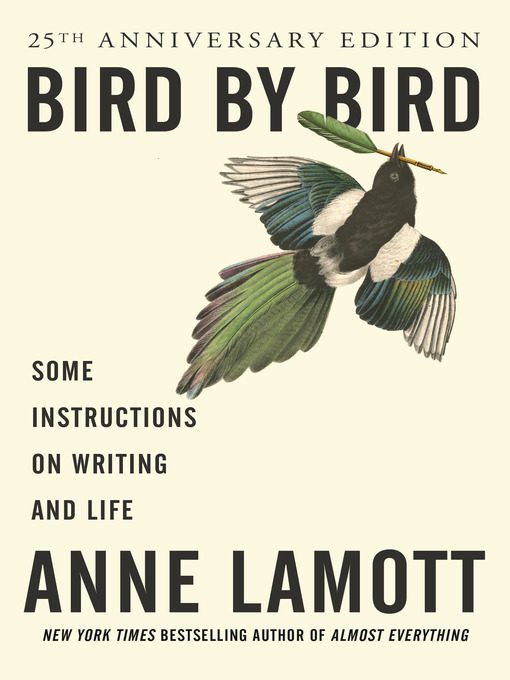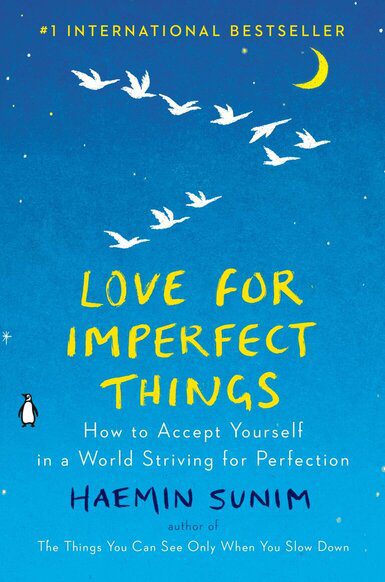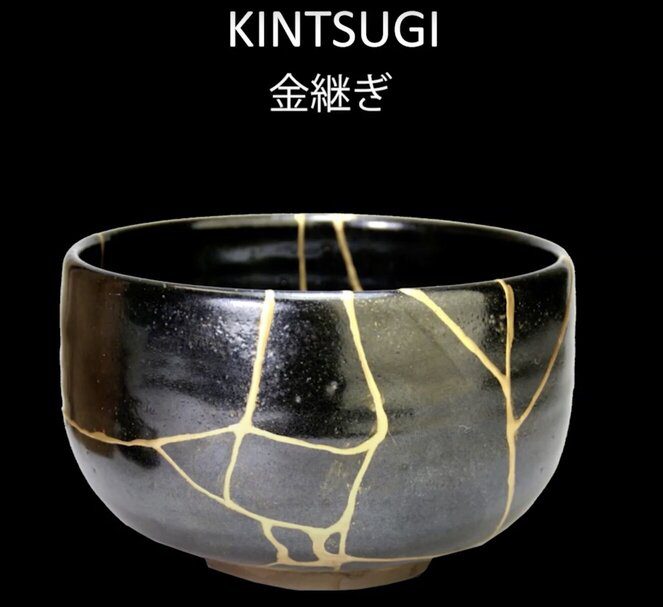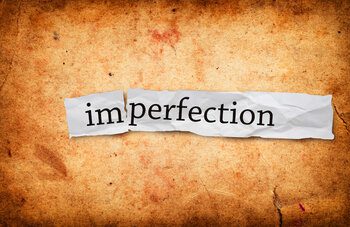‘We are all wonderful, beautiful wrecks. That’s what connects us–that we‘re all broken, all beautifully imperfect.’ – Emilio Estevez
We live in a perfection-obsessed world where everyone has figured it out but the reality is that everyone is winging it and trying to figure it out. Perfectionism is at the root of our present age mental health crisis, with rising suicide rates, depression, and anxiety. According to a 2016 research study conducted by Thomas Curran (Department of health at the University of Bath, UK) and Andrew P. Hill (York St. John University, UK): self-oriented perfectionism, socially prescribed perfectionism, and other-oriented perfectionism have increased over the last 27 years.
Perfectionism is broadly defined as a combination of excessively high personal standards and overly critical self-evaluations (Frost, Marten, Lahart, & Rosenblate, 1990).
Imperfection is a detail that makes something (or someone) less than perfect. We are all imperfect in one way or the other but society conditions us to strive for perfection. Unfortunately, no one is perfect, can be perfect or ever be perfect but we try anyway. Contrary to what you see on social media, the internet, and TV, everyone is imperfect. For example, Barrack Obama might be a paragon of hope, intellect, and a charismatic leader. I adore Obama and he is one of my favorite living people. Most of us look at him and we can’t see him having challenges like all of us but he does like we all do.
Men are more easily governed through their vices than through their virtues. – Napoleon Bonaparte

In his memoir, A promised Land, Former United States President Barack Obama describes his struggle of trying to quit smoking: He writes
THERE WAS A final stress reliever that I didn’t like to talk about, one that had been a chronic source of tension throughout my marriage: I was still smoking five (or six, or seven) cigarettes a day.
It was the lone vice that had carried over from the rebel days of my youth. At Michelle’s insistence, I had quit several times over the years, and I never smoked in the house or in front of the kids. Once elected to the U.S. Senate, I had stopped smoking in public. But a stubborn piece of me resisted the tyranny of reason, and the strains of campaign life—the interminable car rides through cornfields, the solitude of motel rooms—had conspired to keep me reaching for the pack I kept handy in a suitcase or drawer.
I was still smoking five (or six, or seven) cigarettes a day.
After the election, I’d told myself it was as good a time as any to stop—by definition, I was in public just about anytime I was outside the White House residence. But then things got so busy that I found myself delaying my day of reckoning, wandering out to the pool house behind the Oval Office after lunch or up to the third-floor terrace after Michelle and the girls had gone to sleep, taking a deep drag and watching the smoke curl toward the stars, telling myself I’d stop for good as soon as things settled down.
Except things didn’t settle down. So much so that by March my daily cigarette intake had crept up to eight (or nine, or ten).
Finally Quitting
Initially, the pool game had also given me an excuse to duck out and have a cigarette on the third-floor landing. Those detours stopped when I quit smoking, right after I signed the Affordable Care Act into law.
“Sometimes it didn’t matter how good your process was. Sometimes you were just screwed, and the best you could do was have a stiff drink—and light up a cigarette.”
I’d chosen that day because I liked the symbolism, but I’d made the decision a few weeks earlier, when Malia, smelling a cigarette on my breath, frowned and asked if I’d been smoking. Faced with the prospect of lying to my daughter or setting a bad example, I called the White House doctor and asked him to send me a box of nicotine gum. It did the trick, for I haven’t had a cigarette since. But I did end up replacing one addiction with another: Through the remainder of my time in office, I would chomp on gum ceaselessly, the empty packets constantly spilling out of my pockets and leaving a trail of shiny square bread crumbs for others to find on the floor, under my desk, or wedged between sofa cushions.
But I did end up replacing one addiction with another: Through the remainder of my time in office, I would chomp on gum ceaselessly.
The above story of President Barack Obama teaches a very vital lesson: We all have vices, weaknesses, flaws, addictions, battles, and flaws, we are trying to overcome. The key to overcoming it is to radically accept it for what it is, be kind with yourself, commit to dealing with the weakness through self-improvement, embrace your imperfections and become great. We all have weaknesses just like president Obama but when we amplify our strengths, our weaknesses would not be that visible to the world.
Greatness lies, not in being strong, but in the right using of strength; and strength is not used rightly when it serves only to carry a man above his fellows for his own solitary glory. He is the greatest whose strength carries up the most hearts by the attraction of his own. – Henry Ward Beecher
My Writing Journey
I have been experimenting and working on my writing skills through this blog for the past 12 months. I committed to posting at least once a day, writing an article like this every Tuesday and Thursday. I have not missed a blog post and article in the past year. Am I a perfect writer yet? Not even close but I have been able to develop the routine and rituals that make writing daily easier. I do long-form writing almost every weekday, it is the first thing I try to do; on getting to my work desk in the morning. It has not been easy but have stayed committed to the craft and preparing for my greatness. As American Novelist Ernest Hemingway once observed “There is nothing to writing. All you do is sit down at a typewriter and bleed.” You do not need to be great to start but you have to start to be great.
“There is nothing to writing. All you do is sit down at a typewriter and bleed.” – Ernest Hemingway

I am nowhere close to writing proficiency and still make lots of grammatical errors in my write-ups but I am getting better by the day. I have written lots of shitty first drafts and rough drafts that would not see the light of day but with every draft, I get better every day. Author Anne Lamott writes about the concept of the shitty draft in her book, Bird by Bird. She suggests that to be a good writer, you need to write a lot of shitty first drafts because for you to get to good writing, you need to first write terrible articles, blog posts, poems, plots, stories, narratives etc.

In her book, Bird by Bird: Some Instructions on Writing and Life, American novelist and non-fiction writer Anne Lamott noted that to become a good writer takes time and patience to write lots of shitty draft.
Almost all good writing begins with terrible first efforts. You need to start somewhere. Start by getting something— anything—down on paper.
The first draft is the child’s draft, where you let it all pour out and then let it romp all over the place, knowing that no one is going to see it and that you can shape it later. You just let this childlike part of you channel whatever voices and visions come through and onto the page.
Perfectionism is the voice of the oppressor, the enemy of the people. It will keep you cramped and insane your whole life, and it is the main obstacle between you and a shitty first draft.
Perfectionism is based on the obsessive belief that if you run carefully enough, hitting each stepping-stone just right, you won’t have to die. The truth is that you will die anyway and that a lot of people who aren’t even looking at their feet are going to do a whole lot better than you, and have a lot more fun while they’re doing it.
Perfectionism means that you try desperately not to leave so much mess to clean up. But clutter and mess show us that life is being lived. Clutter is wonderfully fertile ground—you can still discover new treasures under all those piles, clean things up, edit things out, fix things, get a grip. Tidiness suggests that something is as good as it’s going to get. Tidiness makes me think of held breath, of suspended animation, while writing needs to breathe and move.
Perfectionism will ruin your writing, blocking inventiveness and playfulness and life force.
Writing the first draft is very much like watching a Polaroid develop. You can’t—and, in fact, you’re not supposed to— know exactly what the picture is going to look like until it has finished developing. First, you just point at what has your attention and take the picture.
Writing the first draft is very much like watching a Polaroid develop. You can’t—and, in fact, you’re not supposed to— know exactly what the picture is going to look like until it has finished developing.

Zen Buddhist monk Haemin Sunim argues that by only accepting yourself–and the flaws that make you who you are–can you have compassionate and fulfilling relationships with your partner, your family, and your friends. In his book, Love for Imperfect Things: How to Accept Yourself in a World Striving for Perfection, he noted:
WHEN WE EXAMINE OUR LIVES, we see many imperfect things, like motes of dust on an old mirror. There are all kinds of things that leave us feeling dissatisfied and unhappy: Our words are often different from our actions, our relationships are strained by our mistakes, our best-laid plans for the future go awry. On top of that, in the course of our lives, we inflict various wounds on others, intentionally or unintentionally, causing us to feel guilt and regret.
But it’s the same when we look at our family and friends. The child who doesn’t listen to what his parents tell him; your own parents who do not understand you; your spouse who doesn’t behave reasonably. Close friends with bad health habits make you worry about their well-being. Every morning when we watch the news unfold, we see that the world is filled with yet more fighting, more accidents, more discord. It seems as though it will never end.”
And yet, even though we find many such imperfect things in the world we live in, we cannot help but love them. Because our lives are far too precious to be spent in ridicule and hatred of what doesn’t appeal to us, of what we do not understand. As we become spiritually mature, we naturally develop more empathy and try to see things from others’ perspectives. This, in turn, teaches us to accept the imperfections of others, and of ourselves, in a more graceful and compassionate way, like a mother loves her child no matter what.
“True freedom is being without anxiety about imperfection.” —Sixth-century Zen master Sengchan
Kintsugi: The Japanese Art of embracing Imperfection

In her book, kintsugi: Finding Strength in Imperfection, Blogger and Personal Development coach Celine Satini writes:
The word kintsugi comes from the Japanese kin (gold) and tsugi (joint), literally meaning “golden joint.” The art of kintsugi is named kintsukuroi, which means “mending with gold.” It is a long and extremely detailed process, executed in numerous stages, lasting several weeks—even months. In some cases, it might even take a year to achieve the best kintsugi
This ancestral technique, developed in Japan during the fifteenth century, consists of repairing a broken object by accentuating its cracks with gold—instead of hiding them. But the philosophy behind it goes much deeper than a simple artistic practice. It has to do with the symbolism of healing and resilience. First taken care of and then honored, the broken object accepts its past and paradoxically becomes more robust, more beautiful, and more precious than before it was broken. This metaphor can provide insight into all stages of healing, whether the ailment is physical or emotional.
Kintsugi is the art of exalting past injuries. The Way of Kintsugi can be understood as a kind of art therapy, inviting you to transcend your struggles and transform your personal hardships into gold. It reminds you that your scars, visible or invisible, are proof that you’ve overcome your difficulties. By marking your history, they demonstrate you’ve survived, and they enrich your soul.
No matter what your injury is, physical (car accident, mastectomy, illness, amputation, disability, old age, burns, assault) or emotional (splitting from a friend or lover, divorce, mourning, depression, unemployment, abandonment, rumors, painful childhood), kintsugi’s energy can support and accompany you along your healing process. Think of it as an initiatory journey, with your injury as the starting point. As you move through the healing process, you will slowly become stronger and eventually turn into gold, as if by alchemy.
Perfection is achieved, not when there is nothing more to add, but when there is nothing more to take away. – Antoine de Saint-Exupéry
The art of kintsugi invites you to let go and to accept the impermanence of things. It teaches us to remain open to the unexpected, to imperfection, to serendipity, and coincidences . . . Japanese philosophy refers to this as mushin no shin, which means “thought without thought” (mu: “nothing/empty,” shin: “heart/spirit”), calling to let things go.
‘Imperfection is beauty, madness is genius and it’s better to be absolutely ridiculous than absolutely boring.’ – Marilyn Monroe
Make your Scar Beautiful
Psychologist and author Tomás Navarro suggested that you make your scar beautiful. In his book, The Japanese Art of Embracing the Imperfect and Loving Your Flaws, He writes:
Don’t feel ashamed of your scar. Don’t cover it up. Don’t hide it. On the contrary, make it beautiful because in it you have the best proof of your strength. The masters of kintsugi don’t hide the scars on the works that come to them for repair. What’s more, not only do they not have the slightest interest in hiding them but they highlight them with precious materials such as gold or silver.
A ceramic piece that has broken is living proof of its fragility. A ceramic piece that has been repaired, concealing the way it has been put back together, is a piece that is hiding all its value—the value that resides in its capacity to rebuild itself after adversity. The masters of kintsugi are aware of this, and they want to respect the main value of a reconstructed piece—its scar. Sometimes scars are inevitable, but it’s up to you to treat them with respect and make them beautiful.
Our beautiful scars give us the necessary strength to keep on living in the world that we love, in the world, we have chosen and built. Sometimes we might feel lost, disillusioned, lacking courage, or simply tired. It’s understandable. Building a new reality is not easy, especially when you are exhausted from the pain you have been suffering.
“Don’t forget that in your scar, in the proof of your strength, you will find the anchoring you so need when in dire circumstances. Find in your beautified scar the impulse you need, the energy that characterizes you, and the courage you have always had.”
We have been programmed from a very young age by society, our caregivers, parents, and our environment to always keep up. We compare ourselves to our cousins, siblings, friends, family members, peers, colleagues, and even frenemies. Social Media is a place where everyone is seemingly perfect: We share marriages but not divorces, pregnancies but not miscarriages, Job Acceptance but not Job Loss, Vacations but not stagnations, you get the point, we share our successes but not our losses. It is always greener on the other side, we set unreasonable standards based on the pressure we put on ourselves and the one society placed on us.
The word ‘imperfect’ actually spells ‘I’m perfect’ because everyone is perfect in their own imperfect ways.
Striving for perfection is a losing proposition as you can and will not get it. Perfection is not realistic but progress is. The key to getting anything done is to start. Start where you are with what you’ve got, you are perfect and wonderfully made to withstand everything thrown at you. No one started where they are right now, they took the risk to start, they bet on themself in spite of their imperfection. We get rewarded in public for what we diligently work on in private. The key to embracing your imperfection is to work on your strengths and your weaknesses might not really matter. As American writer and Vulnerability Researcher Brené Brown noted “You are imperfect, you are wired for struggle, but you are worthy of love and belonging. Imperfections are not inadequacies; they are reminders that we’re all in this together.”
You are imperfect, you are wired for struggle, but you are worthy of love and belonging. Imperfections are not inadequacies; they are reminders that we’re all in this together.” – Brené Brown
All the Best in your quest to get Better. Don’t Settle: Live with Passion.



Comments are closed.